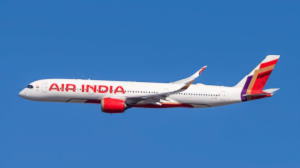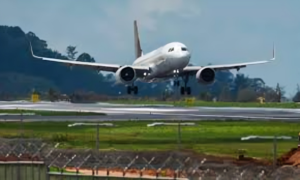Air India Boeing 787-8 Dreamliner AI315 Returns to Hong Kong Mid-Flight Amid Technical Glitch
Introduction
On June 16, 2025, Air India’s Boeing 787‑8 Dreamliner operating flight AI315 from Hong Kong to New Delhi performed an unexpected U‑turn shortly after take‑off. Scheduled to depart at 08:50 AM and land by 12:20 PM, the aircraft returned to Hong Kong International Airport after about 1 hour 19 minutes in the air due to a suspected technical glitch . यह घटना उस समय हुई जब यात्रियों में चिंता फैल गई, क्योंकि flight पहले से ही 3 घंटे 9 मिनट लेट थी .

Why the Dreamliner Returned
Air India spokesperson confirmed that AI315 “air‑returned to Hong Kong shortly after take‑off due to a technical issue” and is now undergoing precautionary checks. In aviation, safety always takes precedence—pilot suspicions of anomalies such as sensor faults or engine warnings trigger immediate returns to ensure passenger well‑being.
- Technical Alerts: Modern Dreamliners are equipped with real‑time monitoring systems that flag engine or flight‑control irregularities.
- Pilot Discretion: Captains have the authority to divert or return if they suspect any risk, prioritizing safety over schedule.
- Maintenance Protocols: Once on ground, engineers perform diagnostics to isolate and fix the root cause before clearance for the next flight.
ये कदम मुझे विश्वास दिलाते हैं कि airlines का प्राथमिक ध्यान यात्रियों की सुरक्षा पर ही होता है।
Context: Recent Mid‑Air U‑Turns
This incident marks the second high‑profile mid‑air diversion by Air India in just a few days. On June 13, flight AIC129 from Mumbai to London had to turn back after 4 hours 21 minutes in response to escalating geopolitical tensions over Iran’s airspace closure . Similarly, on June 15, British Airways flight BA35 from London to Chennai returned after a technical snag, remaining airborne for nearly two hours before diverting .
- AIC129 (Mumbai–London): Route altered due to Iran‑Israel tensions; returned to Mumbai for safety precautions.
- BA35 (London–Chennai): Boeing 787‑8 encountered a fault mid‑air; pilot opted to return to Heathrow.
- AI315 (Hong Kong–Delhi): Suspected glitch triggered U‑turn after sensors flagged an issue early in flight.
इन घटनाओं से स्पष्ट होता है कि aviation industry में safety protocols कितने सख्त हैं।

Impact on Passengers and Operations
Passengers aboard AI315 faced uncertainty and delays. Flight was already over three hours delayed, and the return added further inconvenience. Air India has arranged alternative flights to Delhi at the earliest possible slots .
- Rebooking & Accommodation: Affected travelers are being re‑protected on subsequent flights and, where necessary, provided hotel stays.
- Customer Support: Dedicated helplines and ground staff assist with baggage transfers and onward connections.
- Communication: Real‑time updates via SMS and email keep passengers informed about revised departure times.
यात्रियों को बेहतर सुविधा देने के लिए Air India ने सभी जरूरी इंतज़ाम किए हैं, जिससे उनकी यात्रा फिर से सुगम बन सके।
Lessons for Future Operations
Repeated diversions within a short span highlight two critical lessons for airlines:
- Robust Maintenance Schedules: Even with routine checks, unexpected issues can surface mid‑air. Enhanced predictive maintenance using AI and data analytics could preempt faults before departure.
- Crisis Management Training: Crew and ground teams must be adept at handling passenger anxiety, ensuring clear communication and swift logistical support during diversions.
ये strategies aviation ecosystem को और resilient बनाएंगी।
Real‑Life Analogy: The “Safety First” Mindset
Consider driving a car: if the engine warning light comes on during a journey, most drivers would pull over or head back to a service station rather than push on. Similarly, pilots err on the side of caution—returning to origin airports when any doubt arises about aircraft health.
- Proactive Response: Waiting for a problem to escalate can endanger lives.
- User‑First Approach: Just as drivers prioritize personal safety, airlines prioritize passenger welfare above all else.
इस तरह का mindset तकनीकी क्षेत्र में भी अपनाया जा सकता है, जहाँ risk management और user-first thinking सबसे ज़रूरी होते हैं।
Conclusion
The AI315 incident underscores Air India’s unwavering commitment to safety and the effectiveness of rigorous aviation protocols. While mid‑air returns disrupt schedules and inconvenience travelers, they reinforce the message that no cost or delay compares to ensuring every passenger lands safely. भविष्य में भी, यह उड़ानें safety-first philosophy से ही संचालित होंगी, जिससे कि तकनीकी glitches या external tensions के बावजूद यात्रियों का विश्वास बना रहे।